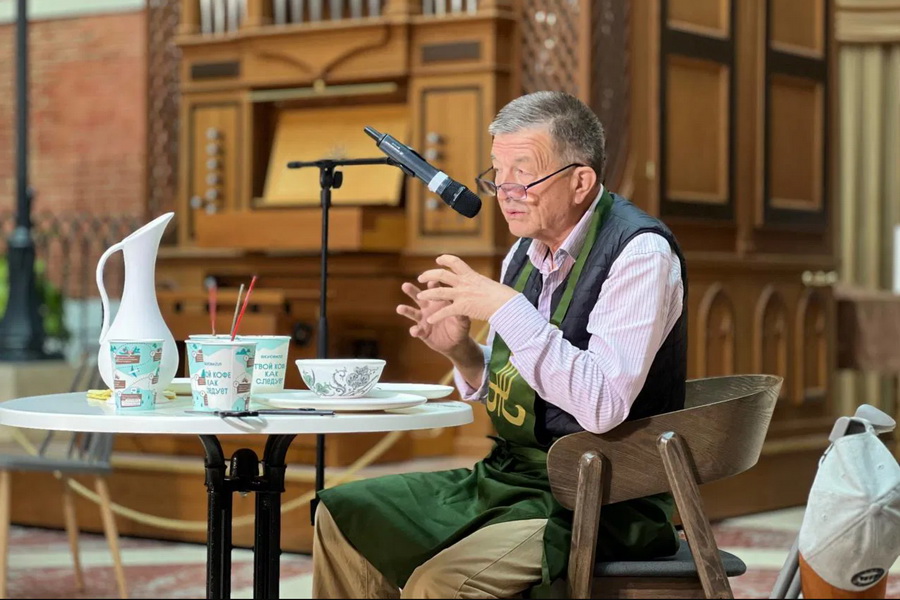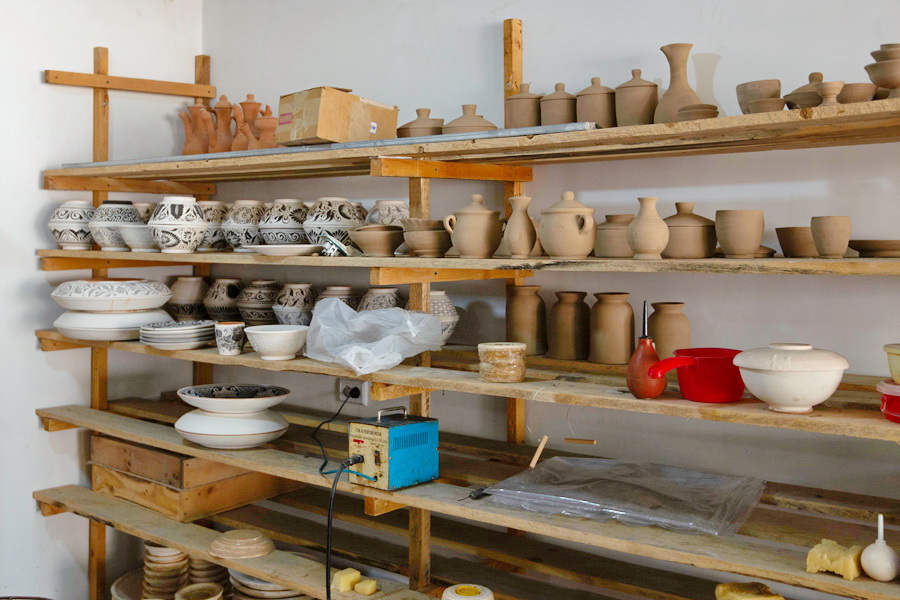
Photo source: www.alishernazirov.com
Alisher Nazirov (born in 1958) is a skilled master craftsman from Rishtan, a member of the Academy of Arts of Uzbekistan and the Association of Folk Artists “Khunarmand”. He is recognized not only for his distinctive creations but also for his dedication to teaching and promoting the ceramic traditions of his homeland.
Early Years and Training
Alisher Nazirov was born in Rishtan, the main center of Uzbek ceramics. Unlike many other craftsmen in this city, he became a master in the first generation, choosing this path entirely on his own. His mentors were some of Uzbekistan’s most renowned craftsmen, including Usto Eliboy Daliyev, as well as Usto Abdukadyr and Kimsanbay Abdukadyr. They taught him the fundamentals of pottery, glaze making, and painting, which later became his primary specialization. Thanks to his remarkable talent for creating intricate patterns and striking color combinations, Alisher Nazirov is often called a “master-nakkosh”, meaning a master artist of ornamental painting.
Work at the Rishtan Factory
In the 1970s, Alisher Nazirov began working at the Rishtan Ceramic Factory. By the 1980s and early 1990s, he had become the chief artist at this enterprise.
Although the Rishtan factory used the same high-quality local clay as independent artisans, it had drifted quite far from the original traditions of Rishtan ceramics. Due to mass production, its products became standardized in shape, color, and ornament. The lower quality of glazes and paints also made this tableware less durable. Still, until the active revival of authentic Rishtan ceramics in the last decade of the 20th century, the factory helped preserve certain elements of the local school.
Return to Craft and Recognition
In the 1990s, Alisher Nazirov returned to hands-on craftsmanship. He went on to create hundreds of works, many of which are now held in museum collections around the world, including in Uzbekistan, Russia, and Japan.
His pieces are regularly displayed at exhibitions and craft fairs in Uzbekistan and abroad – in Russia, Kazakhstan, Germany, Japan, and other countries. Beyond participating, Alisher Nazirov also works to educate the public on the importance of Rishtan art as an ancient traditional craft of Uzbekistan, its materials, time-honored techniques, and deep symbolism.
In 1994, he completed a five-month internship in Japan with master Asakura Isokichi II (浅蔵 五十吉(二代)). This experience introduced him to the Japanese ceramic tradition and marked the beginning of a long, fruitful collaboration with Japanese ceramists and cultural figures.
Teaching and Passing on the Craft
In 2005, the master opened his own ceramics school in Rishtan, where he has since taught around 100 students. Many of them, such as Khusanboy Isanov and Maksum Mamadzhanov, have already become accomplished and well-known masters in their own right.
Alisher Nazirov also introduced his younger brother, Bakhtiyor Nazirov, to the art of ceramics, effectively founding a new dynasty of ceramists in Uzbekistan. Today, the second generation has joined this family tradition, with his nephews Jahangir Nasrullaev and Dierbek Nazirov successfully mastering this complex Uzbek craft.
His Artistic Style and Inspiration
Alisher Nazirov’s style developed within the tradition of his native city, yet it stands out for its vividness and originality. The master often says that no two of his pieces are ever exactly alike – each is unique in its own way. He draws inspiration from Uzbekistan’s rich ceramic history, studying archaeological finds and scholarly research. As a result, many of his works recreate ancient designs. For instance, he has revived the once-popular ceramic bowl used for washing the head. In the past, these bowls were essential household items, given as gifts to girls and included in dowries. Today, they have largely fallen out of daily use and are valued more for their historical and decorative significance. For this reason, Alisher Nazirov typically makes them in smaller sizes – either for educational purposes or as a distinctive interior accent.
All of his ceramic ornaments are also rich in meaning. The “pepper” pattern (sometimes called “cucumber”) is considered a talisman. The image of two birds, which often appears as small figures, traditionally symbolizes a husband and wife, conveying wishes for happiness in family life.
Secrets of making Rishtan pottery from Alisher Nazirov
- Red clay.
The master uses a special type of clay found in abundance in the city of Rishtan. This clay, extracted at a depth of about 1.5 meters, is known for its high quality and excellent plasticity. - High-quality glaze.
Rishtan tableware is coated with “ishkor” glaze, prized for its unique composition and durability. Following the ancient tradition of Uzbek crafts, this glaze requires rare high-mountain plants, which Alisher Nazirov collects himself each year in the area surrounding the city. - Stylish color combinations.
His palette is rooted in the traditional blue and turquoise of Rishtan ceramics, but he also actively incorporates other shades, especially beige and brown. All colors are derived from natural dyes, resulting in distinctive, sought-after pieces. - Handmade at every stage.
Alisher Nazirov notes that even using a mill to process pigments alters the final shade in a way that is visible to the naked eye. Thanks to this meticulous approach, his products feature beautifully refined details, rich hues, and remarkably durable glazes.
Workshop and Museum in Rishtan

Alisher Nazirov’s main workshop is located in Rishtan. Here, he teaches students and welcomes visitors, guiding them through displays of his many works. The workshop holds not only his own creations but also pieces crafted by his students, along with historical examples of Rishtan tableware from past centuries. This means that a visit to Alisher Nazirov’s workshop offers a rich look at both modern Rishtan art and the history of this remarkable Uzbek craft.
In addition, Alisher Nazirov regularly hosts master classes, generously sharing the secrets of creating unique Uzbek ceramics. Beyond the Rishtan workshop, his works can also be seen and purchased in other cities: in Samarkand, at the Eternal City complex, and in Tashkent, at the Tashkent City Mall.
Visitor Information
- Address: Bobur Street, 50, Rishtan city, Ferghana Region, Uzbekistan
- Phone: +99891 0465566, +99894 6595908,
+99891 5484087, +99890 3556737, +99890 3262722 - Opening hours: everyday, 08:00 am – 07:00 pm
- Website: www.alishernazirov.com

